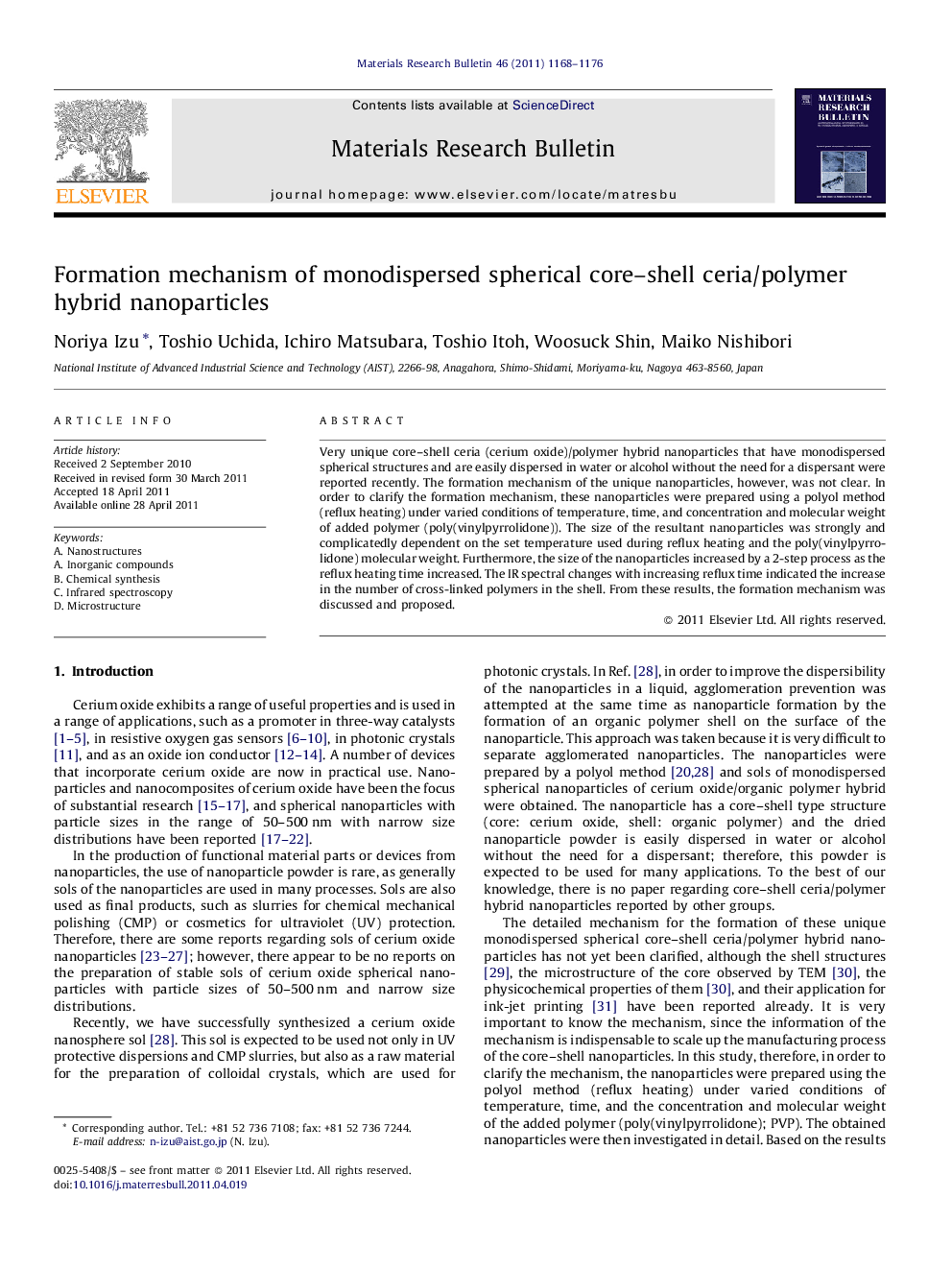| کد مقاله | کد نشریه | سال انتشار | مقاله انگلیسی | نسخه تمام متن |
|---|---|---|---|---|
| 1490782 | 992333 | 2011 | 9 صفحه PDF | دانلود رایگان |

Very unique core–shell ceria (cerium oxide)/polymer hybrid nanoparticles that have monodispersed spherical structures and are easily dispersed in water or alcohol without the need for a dispersant were reported recently. The formation mechanism of the unique nanoparticles, however, was not clear. In order to clarify the formation mechanism, these nanoparticles were prepared using a polyol method (reflux heating) under varied conditions of temperature, time, and concentration and molecular weight of added polymer (poly(vinylpyrrolidone)). The size of the resultant nanoparticles was strongly and complicatedly dependent on the set temperature used during reflux heating and the poly(vinylpyrrolidone) molecular weight. Furthermore, the size of the nanoparticles increased by a 2-step process as the reflux heating time increased. The IR spectral changes with increasing reflux time indicated the increase in the number of cross-linked polymers in the shell. From these results, the formation mechanism was discussed and proposed.
The formation mechanism for core–shell nanoparticles is considered to be as follows: nucleation and particle growth occur simultaneously (left square); very slow particle growth occurs (middle square).Figure optionsDownload as PowerPoint slideHighlights
► The size of the resultant nanoparticles was strongly and complicatedly dependent on the set temperature used during reflux heating and the PVP molecular weight.
► The size of the nanoparticles increased by a 2-step process as the reflux heating time increased.
► The IR spectral changes with increasing reflux time indicated the increase in the number of cross-linked polymers in the shell.
Journal: Materials Research Bulletin - Volume 46, Issue 8, August 2011, Pages 1168–1176